Press ? for presentation controls.
Best viewed in Firefox,
Chrome and
Opera.
Backward asymptotics
in Logistic-like maps
Howard University
Washington, DC (USA)
Motivation
Complex rational maps
While $\omega$-limits have been thoroughly studied in literature, much less has been done until 2020s for $\alpha$-limits. The following is one of the strongest results known:THEOREM [Hawkins, Taylor (2003)].Let $f:\Bbb C\to\Bbb C$ be a rational map of degree $\geq2$.
Recall that, in this case, $f$ has a unique repellor,
its "Julia set" $J_f$.
Then, for any $z_0\in\Bbb C$ (except at most two points) and for almost all bitrajectories $t$ based at $z_0$, $s\alpha(t)=J_f$.
Example: the Newton map of $z^3-1$

From R. De Leo, CONJECTURES ABOUT SIMPLE DYNAMICS FOR SOME REAL NEWTON MAPS ON $\Bbb R^2$, Fractals, 27:6 (2019)
A Natural Question
What can be said about backward limits of bitrajectories in 1-dimensionalA few Definitions
Def 1: Trajectories of a discrete DS
A discrete dynamical system on a topological space$x_0=x$ ;$x_{i+1}=f(x_i)$ for all$i\in\Bbb Z$ .

Def 2: $s\alpha$ and $\omega$ limits
Given a bitrajectoryDef 3: Chain-recurrent points
For each bitraj|
A point $x$ is an $\epsilon$-chain from $x$ to itself. We denote by |
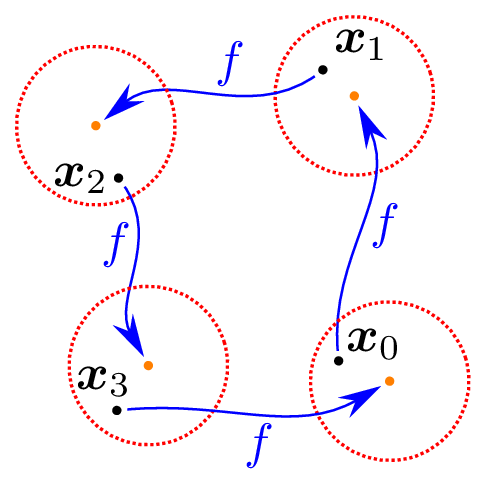
|
Def 4: Attracting and repelling Nodes
A main feature ofthat is a closed invariant set $A\subset M$ such that
The Logistic map
Fundamental properties

|
|
Bifurcation diagram of the logistic map
- Periodic orbit
- Feigenbaum attractor
- Cycle of intervals (chaotic)
- Beginning of a window
- End of a window
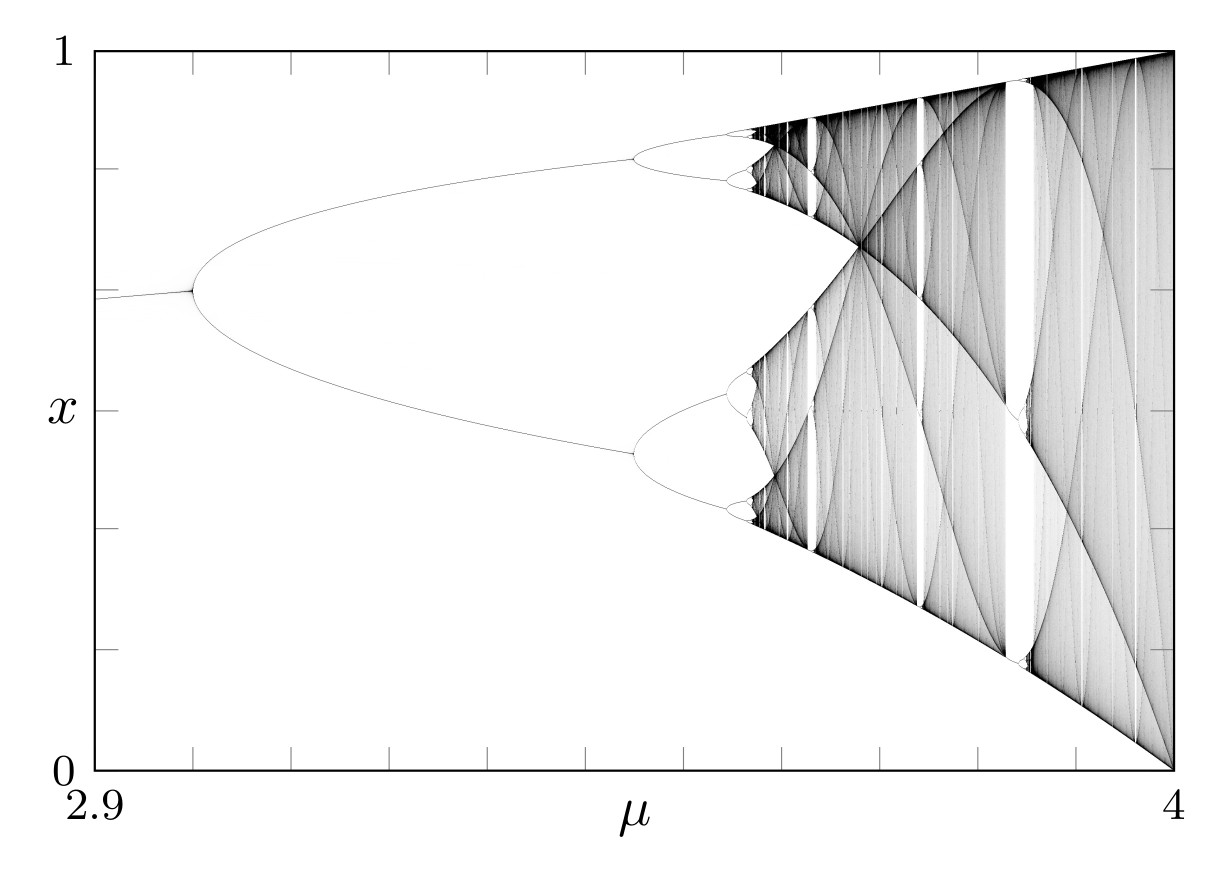
Bifurcation diagram of the logistic map
Periodic orbit Cantor set
(subshift of finite type)
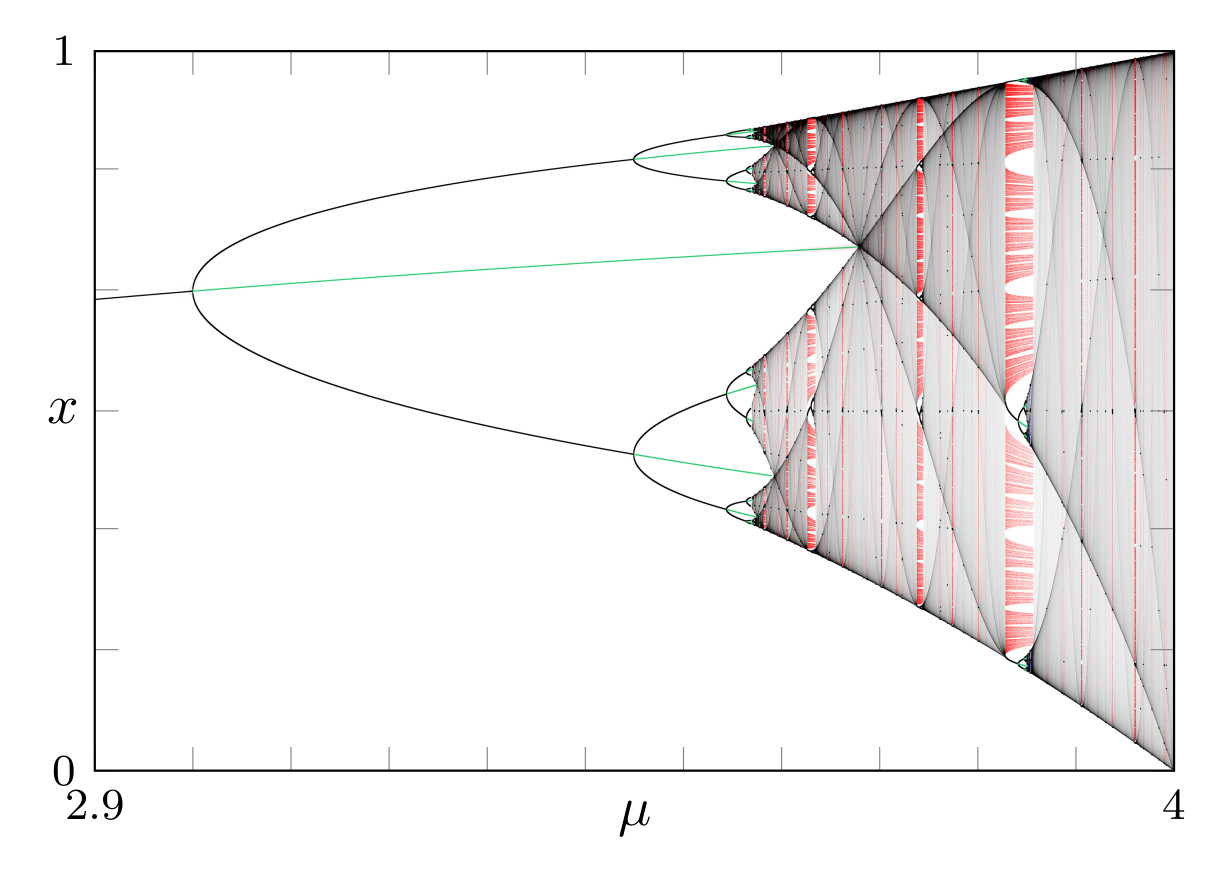
Conley's thm and the graph of a DS
THEOREM [Conley (1972), Norton (1995)]In other words, for every bitrajectory
Let $f:M\to M$ be a continuous map.
Outside the chain-recurrent set $\cal R_f\subset M$,
the dynamics of $f$ is gradient-like.
Conley's thm and the graph of a DS
A corollary of Conley's theorem is that- The
nodes of $\Gamma_f$ are theequivalence classes of $\cal R_f$ . - There is an edge from node
$N$ to node$M$ of $\Gamma_f$ if there is a bitrajectory$t$ of $f$ such that$\alpha(t)\subset N$ and$\omega(t)\subset M$ .
The graph of the Logistic map is a tower
In R. De Leo, J.A. Yorke,
The graph of the logistic map is a tower, Discr. & Cont. DS (2021),
we proved that all nodes of the Logistic map
can be sorted in a linear order
The graph of the Logistic map is a tower
In particular this means that, arbitrarily close to each node $N_i$, there are points whose trajectory asymptote to each $N_j$ "below it", namely with $j > i$. Similarly, arbitrarily close to each node $N_i$, there are points having bitrajectories that asymptote backward to each $N_j$ "above it", namely such that $j < i$.A few examples of towers

A few examples of towers

$s\alpha$-limits
under the Logistic map
Trapping regions
THEOREM [RdL, Yorke (2021)]
Each repelling node $N$ has a periodic point $p_1(N)$ s.t.$d(N,c)=d(p_1(N),c)$ and comes with acyclic trapping region ${\cal T}(N)$, that is a forward-invariant cycle of closed intervals$J_1=J_1(N),\ell_\mu(J_1),\dots,\ell_\mu^{\ k-1}(J_1)$ such that:
$J_1=[p_1(N),1-p_1(N)]$
$\ell_\mu^{\ k}(J_1)\subset J_1$ .
Trapping regions

Trapping regions
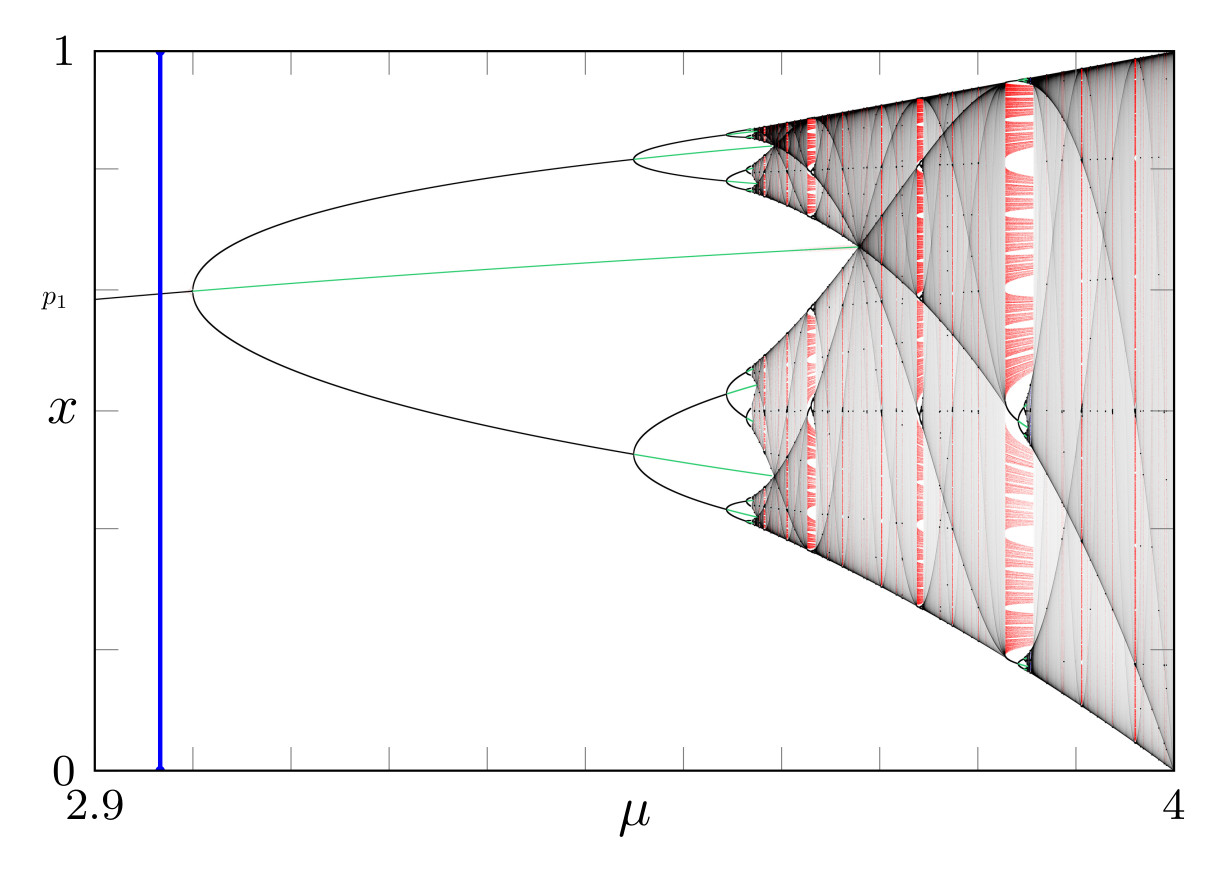
Trapping regions

Trapping regions

Trapping regions

Trapping regions
Remark 1
Trapping regions are nested one into the other.
Remark 2
Node $N_{i+1}$ is the set of all chain-recurrent points of ${\cal T}(N_i)$ that never fall in the interior of ${\cal T}(N_{i+1})$ under $\ell_\mu$.
Main result
We say that $x\in[0,1]$ is a level-$k$ point for $\ell_\mu$ if $x$ is inside ${\cal T}(N_{k-1})$ but is not inside ${\cal T}(N_{k})$THEOREM [RdL (2021)].
Let $x$ be a level-$k$ point. If $x\in N_k$, then $s\alpha(x)=N_0\cup N_1\cup\dots\cup N_k\;$ Otherwise, for $k < p$, $s\alpha(x)=N_0\cup N_1\cup\dots\cup N_{r}$ for $r=k$ or $r=k-1$ or $r=k-2\;$; for $k = p$, $s\alpha(x)=N_0\cup N_1\cup\dots\cup N_{r}$ for $r=p-1$ or $r=p-2\;$.
Example 1
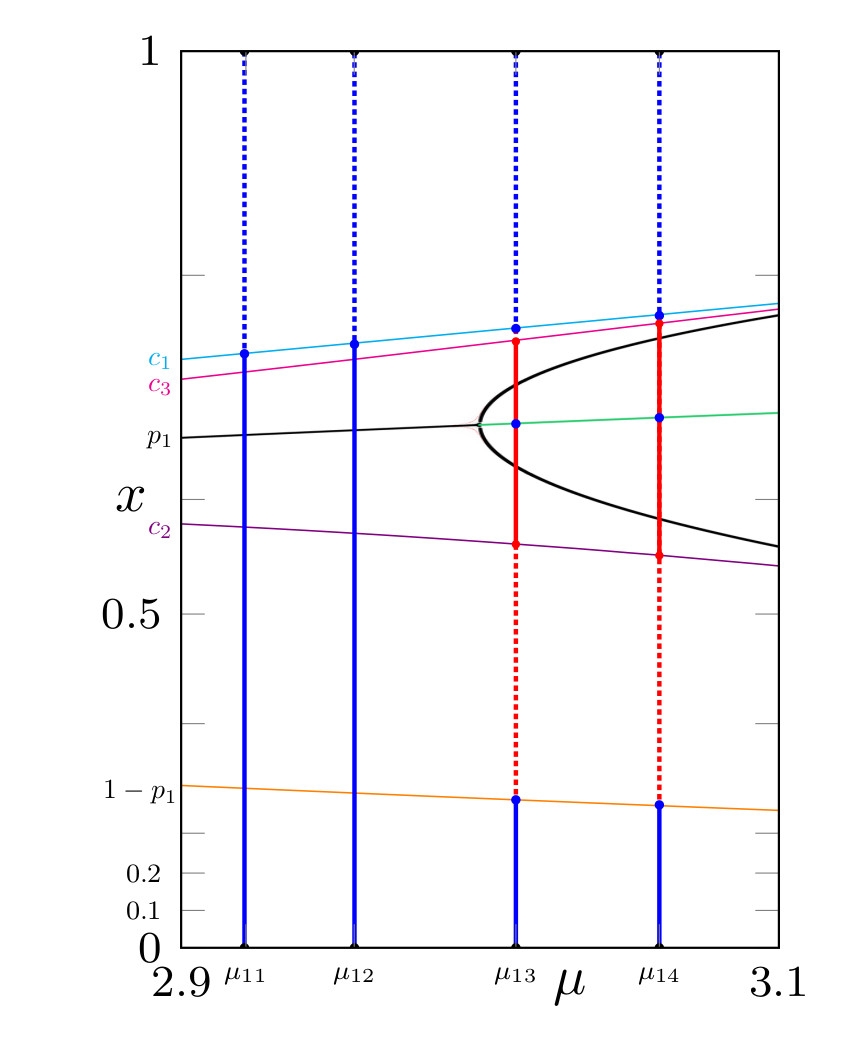
Example 2

Example 3
